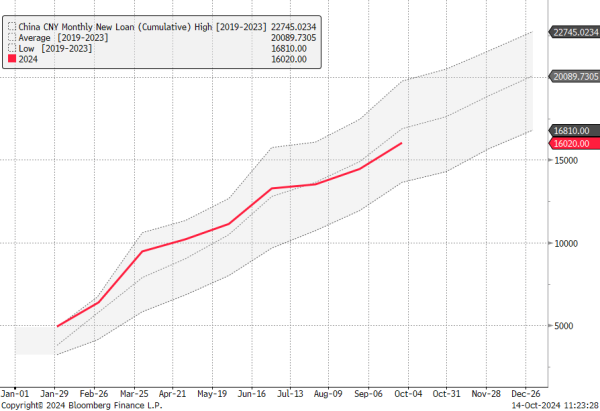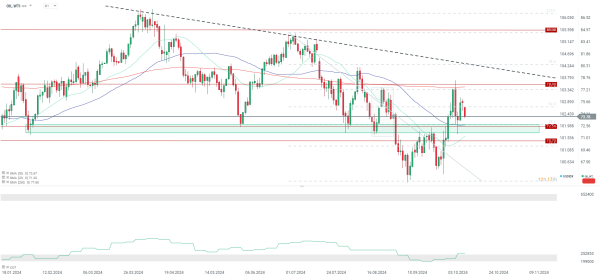⏬WTI crude oil drops 2% at week's opening
Disappointment from China and lack of escalation in the Middle East lead to lower prices 💡
Oil is losing more than 2% to start the new week, mainly due to the publication of a series of weak data from China and the failure to announce new tools to stimulate the economy. In addition, there was no escalation of the situation in the Middle East, although the United States began to deploy additional missile defense infrastructure in Israel.
The market's greatest hopes were for a speech by the finance minister in China over the weekend. New tools to support the 2 trillion yuan economy were expected to be announced. However, the speech by the Chinese official failed to provide any specifics. In addition, data released from China disappointed:
- CPI inflation came in at just 0.4% y/y for September, against expectations of 0.8% y/y and the previous figure of 0.6% y/y
- Export growth fell dramatically to 2.4% y/y, against expectations of 6.0% y/y and the previous level of 8.7% y/y
- China's new loans performed below expectations. M1 money supply again scores strong declines

China's cumulative new loans disappointed and fell below the 5-year average. Of course, the data is for September, so the impact of the new methods announced and the effect of the interest rate cut are not yet here. Source: Bloomberg Finance LP, XTB
Investors are also keeping a close eye on the situation in the Middle East. There was no significant escalation of the situation over the weekend, although the US military began installing additional missile defenses on solid ground, which may have been related to the launch of a drone attack by Hezbollah on an Israeli military outpost. This action may also suggest that Israel is preparing for possible additional attacks, following Israel's possible response to Iran's latest missile attack. Speculative positions in contracts are beginning to rebound, although the largest increase in positions is in options.
WTI crude oil is losing more than 2% today, opening with a gap below $75 per barrel. Key support for WTI is around the $72.5 per barrel level, where the 50-period average and oil's previous reactions in February, June, July and August this year are located. The 25-period average could suggest a change in trend, but resistance near the $78 level, reinforced by the 100-period average, remains distant. This level could be pierced when Israel attacks Iran's oil infrastructure.
